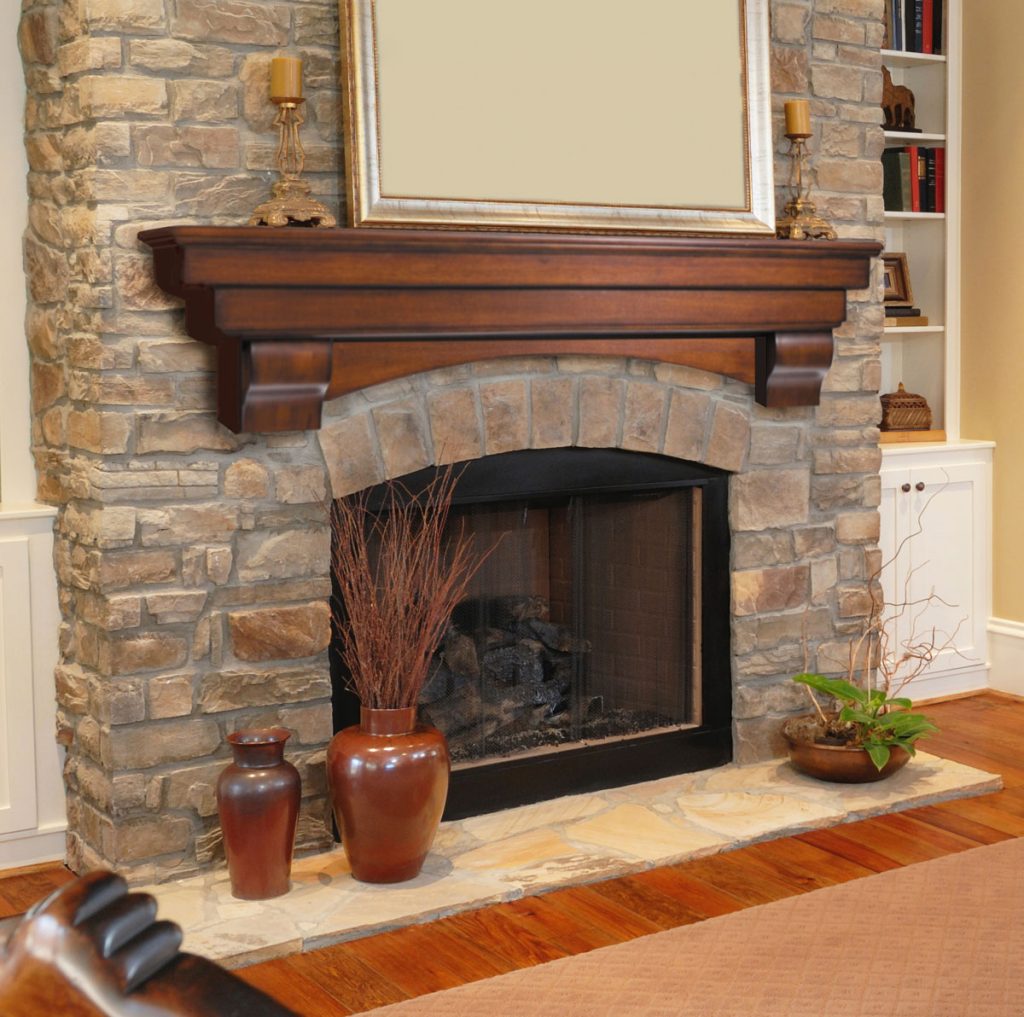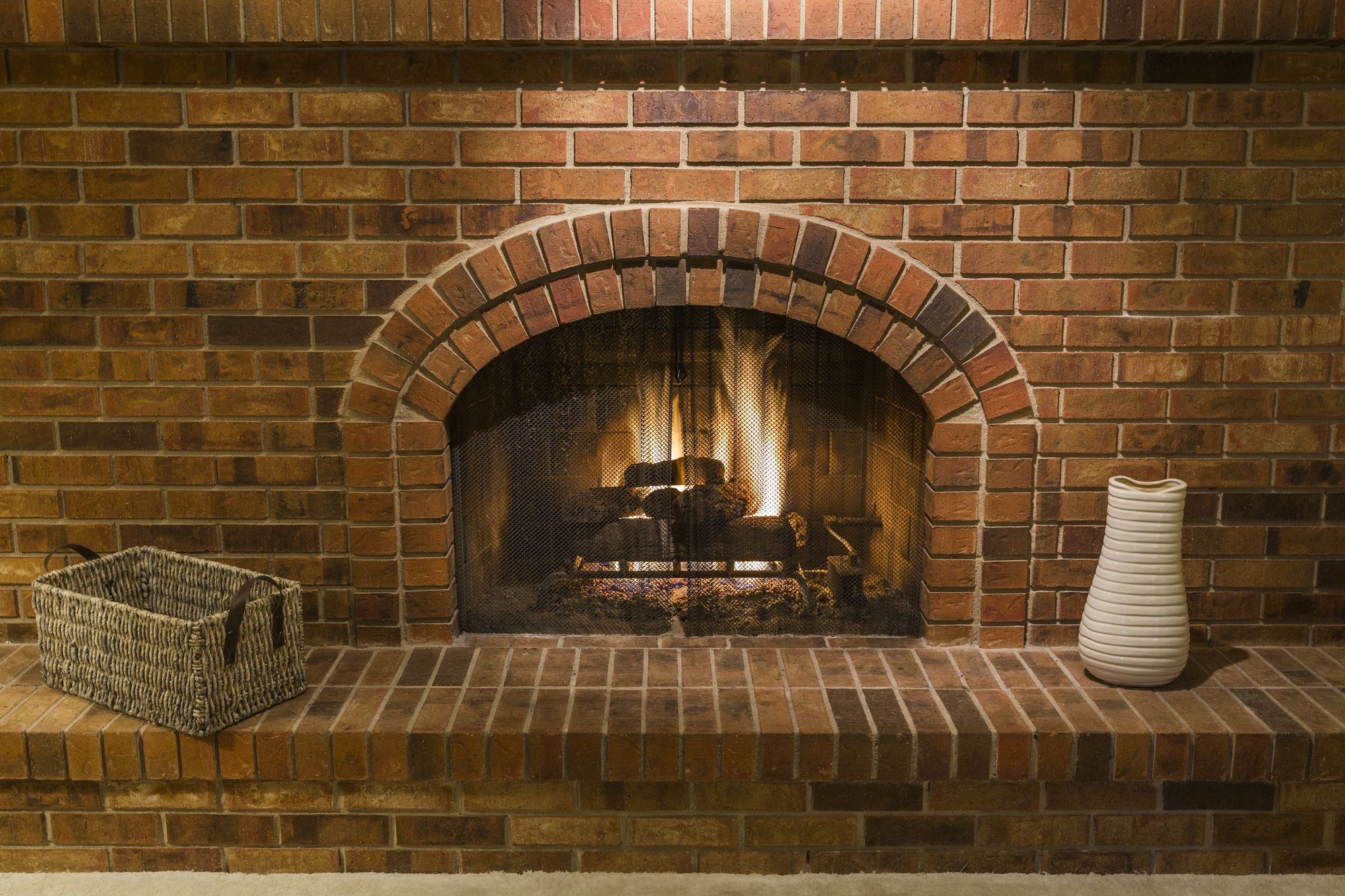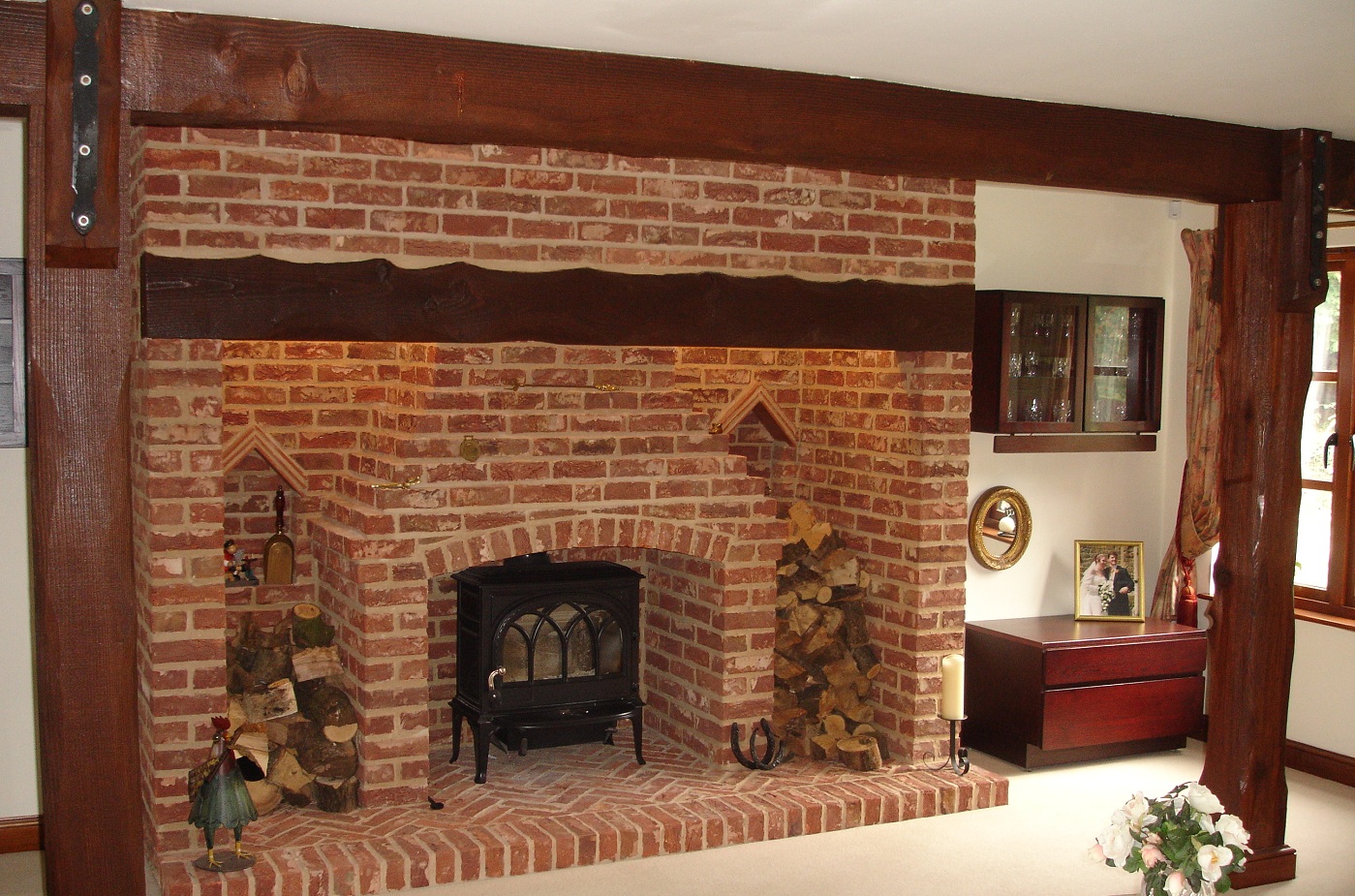Introduction to Brick Fireplaces
Brick fireplaces have been a central feature of homes for centuries, providing warmth, comfort, and a place for families to gather. These traditional structures, often found in older homes, bring a sense of history and charm that modern alternatives sometimes lack. Their timeless appeal, combined with their functionality, makes them a desirable feature in many living spaces.
A real brick fireplace offers a tangible connection to the past. The materials used, the craftsmanship involved, and the enduring nature of brick itself contribute to a feeling of permanence and stability. Unlike other building materials, brick has a unique ability to withstand the test of time, both in terms of durability and aesthetic appeal. This durability ensures that a brick fireplace can be a lasting fixture in a home for generations.

The aesthetic value of a brick fireplace is another significant aspect. The natural texture and color variations in brick can complement a wide range of interior design styles, from rustic to contemporary. Whether left in its natural state or painted, a brick fireplace can serve as a stunning focal point in any room. It adds a layer of depth and character that is difficult to replicate with other materials.
Beyond its visual and historical appeal, a real brick fireplace also offers practical benefits. It provides efficient heating, often becoming the primary source of warmth in a room. The thermal mass of brick retains heat, radiating it slowly even after the fire has died down. This efficiency can help reduce energy costs and create a cozy environment during colder months.

Historical Significance and Evolution
Brick fireplaces have a rich history, dating back to ancient civilizations. The earliest fireplaces were simple fire pits dug into the ground, used primarily for cooking and warmth. As societies advanced, so did the design and functionality of fireplaces. By the medieval period, fireplaces had become integral parts of homes, evolving into more sophisticated structures with chimneys to direct smoke outside.
The use of brick in fireplace construction became prominent during the Renaissance, when advancements in brick-making techniques allowed for more uniform and durable materials. This period saw the rise of grand, ornate fireplaces in the homes of the wealthy, often adorned with intricate carvings and decorative elements. Brick, with its versatility and strength, became the preferred material for these elaborate designs.

During the Colonial era in America, brick fireplaces were central to home life. They were not only a source of heat but also a place for cooking and socializing. The design of these fireplaces was typically large and functional, often occupying a significant portion of the living space. The brick construction provided the necessary durability to withstand the intense heat generated by the constant use.
In the 19th and 20th centuries, the role of the fireplace began to shift as new heating technologies emerged. However, brick fireplaces remained popular, particularly in the context of home aesthetics and design. They transitioned from being a primary heat source to a secondary one, valued more for their ambiance and visual appeal. This period also saw the introduction of smaller, more decorative fireplaces, which could be integrated into various architectural styles.

Design and Construction Considerations
When designing and constructing a real brick fireplace, several factors must be considered to ensure both functionality and aesthetic appeal. The first step is choosing the right type of brick. Not all bricks are created equal; some are more suited for high-heat applications than others. Firebricks, for example, are specially designed to withstand extreme temperatures and are typically used for the inner lining of the fireplace.
The design of the fireplace should complement the overall style of the home. Whether it is a traditional, rustic design or a sleek, modern one, the fireplace should serve as a harmonious focal point. This involves selecting appropriate colors, textures, and finishes for the brick. Natural red or brown bricks can create a classic look, while painted or whitewashed bricks can offer a more contemporary feel.

Proper construction techniques are crucial for the safety and longevity of a brick fireplace. The foundation must be solid to support the weight of the brick structure. The firebox, where the fire burns, needs to be built with heat-resistant materials to prevent damage over time. Additionally, the chimney must be correctly designed to ensure efficient venting of smoke and gases. This often requires adherence to local building codes and standards.
Maintenance is another critical consideration. While brick fireplaces are relatively low-maintenance, they still require regular care to ensure they remain in good condition. This includes periodic cleaning of the chimney to prevent soot buildup, inspecting the brickwork for any signs of damage or wear, and ensuring the mortar joints remain intact. Proper maintenance not only extends the life of the fireplace but also ensures it operates safely and efficiently.
You Probably Find These Articles Interesting:
- Tiling a Brick Fireplace
- Brick Fireplace Transformations
- Transforming Your Hearth: A Guide To Renovating A Brick Fireplace
- Color Wash Brick Fireplace
- How to Redo a Brick Fireplace

The Role of Brick Fireplaces in Modern Homes
In modern homes, brick fireplaces continue to be cherished for their unique blend of form and function. They serve as a striking design element, adding warmth and character to any room. Despite advancements in heating technology, many homeowners still value the ambiance and comfort that a real brick fireplace provides.
One of the primary roles of a brick fireplace in a contemporary home is as a focal point. It can anchor a room’s design, drawing attention and creating a cozy atmosphere. Whether it’s a grand fireplace in a spacious living room or a smaller one in a more intimate setting, its presence can significantly enhance the aesthetic appeal of the space.
Brick fireplaces also offer a sense of tradition and continuity. In a rapidly changing world, they provide a link to the past, evoking memories of simpler times. This nostalgic value can make a house feel more like a home, providing comfort and reassurance. The physical act of building and tending a fire can be a grounding experience, connecting people with elemental aspects of nature.
Furthermore, brick fireplaces can contribute to the overall energy efficiency of a home. While they may not be the primary heat source, they can supplement other heating methods, particularly during the colder months. The thermal mass of the bricks helps retain and radiate heat, reducing the need for constant fuel consumption. This can lead to energy savings and a reduced environmental footprint.
In terms of property value, a well-maintained brick fireplace can be a significant selling point. It adds a unique charm and appeal that can set a home apart in the real estate market. Potential buyers often view fireplaces as desirable features, associating them with luxury and comfort. Thus, investing in a brick fireplace can enhance both the enjoyment and the marketability of a home.

Common Mistakes to Avoid
When it comes to brick fireplaces, several common mistakes can compromise both their functionality and aesthetics. Being aware of these pitfalls can help homeowners and builders create a beautiful, long-lasting fireplace.
One common mistake is choosing the wrong type of brick. Not all bricks are suitable for use in a fireplace. Regular building bricks can crack and deteriorate when exposed to high temperatures. It’s essential to use firebricks for the firebox and heat-resistant bricks for the outer structure to ensure durability and safety.
Improper construction techniques are another frequent issue. A solid foundation is crucial for supporting the weight of the brick fireplace. Skimping on the foundation can lead to settling and cracking over time. Additionally, the firebox must be correctly built with appropriate materials and dimensions to ensure efficient burning and venting.
Neglecting the chimney design can also cause problems. A poorly designed chimney can result in inadequate draft, leading to smoke and gases not venting properly. This can create safety hazards and reduce the fireplace’s efficiency. Ensuring the chimney is correctly sized and constructed according to building codes is vital.
Finally, inadequate maintenance is a common oversight. While brick fireplaces are relatively low-maintenance, they still require regular care. Failing to clean the chimney, inspect the brickwork, and maintain the mortar joints can lead to deterioration and potential safety issues. Regular maintenance helps ensure the fireplace remains in good working condition for years to come.

What are the benefits of having a real brick fireplace?
A real brick fireplace offers several benefits, including aesthetic appeal, historical charm, and practical functionality. Brick fireplaces serve as a striking focal point in any room, adding warmth and character. They provide a tangible connection to the past, evoking a sense of tradition and continuity. Additionally, brick’s thermal mass helps retain and radiate heat efficiently, contributing to energy savings and a cozy environment.
How do I maintain a brick fireplace?
Maintaining a brick fireplace involves several key steps. Regularly clean the chimney to prevent soot and creosote buildup, which can cause chimney fires. Inspect the brickwork for any signs of damage, such as cracks or loose bricks, and repair as necessary. Check the mortar joints to ensure they remain intact and reseal or repoint them if needed. Periodic cleaning of the firebox and hearth also helps keep the fireplace in good condition.

Can a brick fireplace be modernized?
Yes, a brick fireplace can be modernized to fit contemporary design styles. One common method is to paint or whitewash the brick, giving it a fresh, updated look. Adding a new mantel or surround can also transform the appearance of the fireplace. Integrating modern design elements, such as sleek metal or glass accents, can create a more contemporary aesthetic while retaining the classic charm of the brick structure.
Are brick fireplaces energy-efficient?
Brick fireplaces can be energy-efficient due to the thermal mass properties of brick. The bricks absorb heat from the fire and radiate it slowly, providing warmth even after the fire has burned down. This can help reduce reliance on other heating sources and lower energy costs. However, the overall efficiency depends on proper design and construction, including a well-built firebox and chimney to ensure efficient burning and venting.
What are the safety considerations for a brick fireplace?
Safety considerations for a brick fireplace include ensuring proper construction and regular maintenance. Use firebricks for the firebox and heat-resistant bricks for the outer structure. Ensure the chimney is correctly designed and maintained to prevent smoke and gas buildup. Regularly clean the chimney to avoid creosote accumulation, which can cause chimney fires. Inspect the brickwork and mortar joints for damage and repair as needed to maintain structural integrity.
Related Images for Inspiration




Final Thoughts
A real brick fireplace, with its timeless charm and undeniable warmth, is more than just a heating appliance; it’s a focal point, a symbol of comfort, and a testament to enduring craftsmanship. Crafted from individual bricks, each bearing its own unique texture and color, a real brick fireplace exudes a rustic, authentic beauty that complements a wide range of architectural styles.
The bricks, often sourced locally, tell a story of the earth itself, adding a grounding element to any space. The intricate mortar joints, meticulously crafted by skilled hands, weave a tapestry of texture and depth, creating a visual feast for the eye. Beyond aesthetics, a real brick fireplace offers tangible benefits. Its thermal mass allows it to absorb and release heat gradually, creating a gentle, long-lasting warmth that radiates throughout the room.
The crackling fire, a mesmerizing dance of flames and embers, provides a soothing ambiance, inviting relaxation and fostering a sense of connection. Whether it’s a cozy evening spent reading by the fire or a gathering of loved ones around the hearth, a real brick fireplace serves as a timeless backdrop for cherished memories. Its enduring presence, a testament to the enduring power of nature and human ingenuity, makes it an invaluable asset to any home, a true heart of warmth and hospitality.
Related Posts:
- Red Brick Fireplace Living Room
- How to Build a Brick Fireplace Indoor
- German Smear on Brick Fireplace
- Brick Fireplace Vents
- Brick Fireplace Christmas Decorations
- Tips For Painting Brick Fireplace
- How To Clean Red Bricks On A Fireplace
- Decorative Brick Fireplace Ideas
- Exterior Brick Fireplace
- Ugly Brick Fireplace